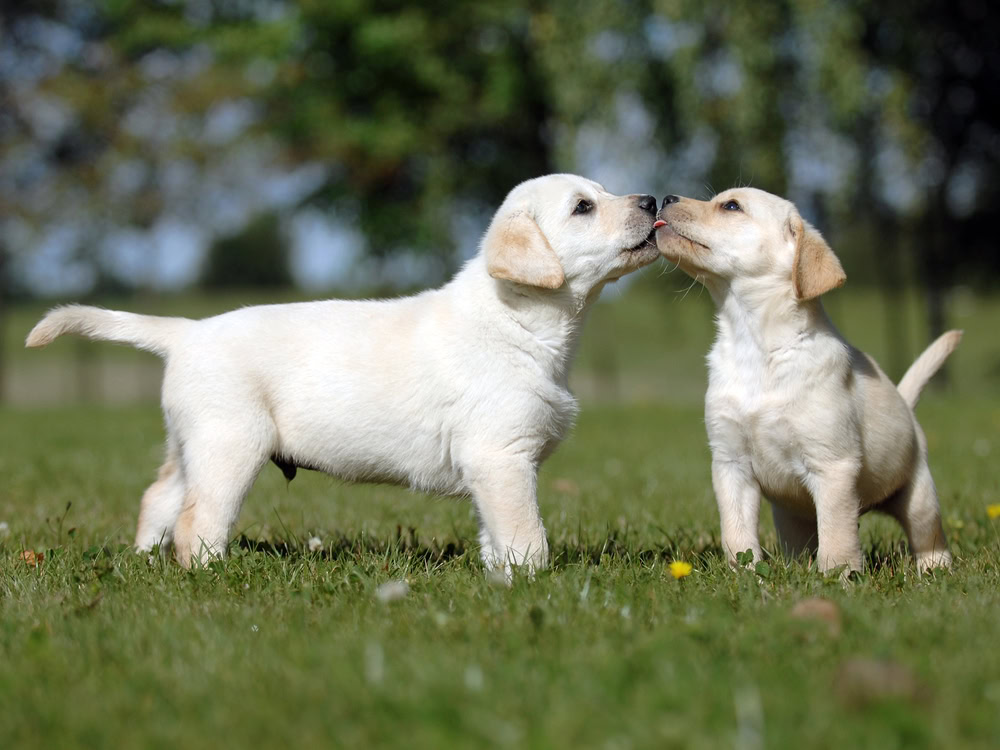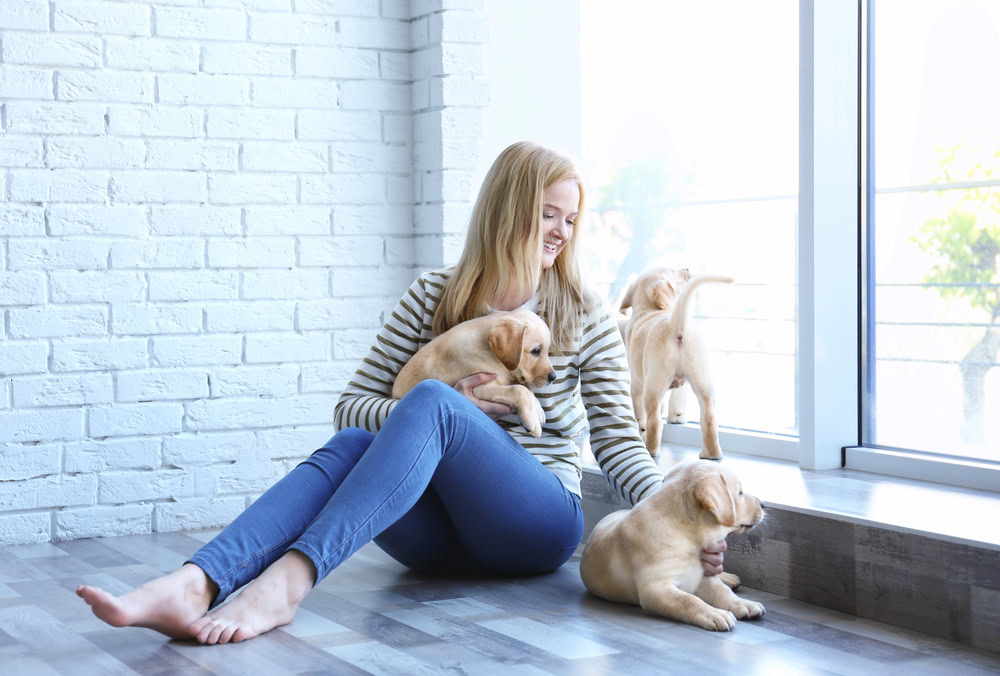
You’re about to initiate one of the most critical periods of your puppy’s development: socialization. While you’ve probably heard that puppies need to meet other dogs and people, there’s much more to proper socialization than casual encounters at the dog park. The way you introduce your puppy to new experiences during their first few months will shape their behavior and confidence for life. From managing their anxiety levels to creating positive associations, successful socialization requires careful planning and the right approach. Let’s explore the essential steps that’ll help your puppy become a well-adjusted adult dog.
Starting your puppy’s socialization early is crucial for raising a well-adjusted, confident dog. You’ll want to begin this process before your puppy reaches 16 weeks of age, but only after they’ve received their first vaccinations and deworming treatment.
The most critical window for socialization occurs between 8 and 11 weeks, when your puppy is especially receptive to new experiences. Early exposure by breeders can help develop more confident and friendly puppies.
During this sensitive period, you’ll need to expose your puppy to a wide range of positive experiences. Don’t rush the process - it’s important to proceed at your puppy’s pace and create pleasant associations with each new encounter.
Remember that socialization isn’t a short-term project but rather an ongoing process that continues throughout your dog’s development.
You should focus on making each new experience positive and controlled. If you notice signs of stress like panting, pacing, or hiding, take a step back and give your puppy time to adjust.
Never force your puppy into uncomfortable situations, as this can create lasting negative associations. Instead, use treats, praise, and gentle encouragement to help them build confidence at their own pace.
A puppy’s first encounters with new experiences shape their future reactions, making it essential to carefully plan their introductions to different environments and stimuli.
You’ll want to expose your puppy gradually to new settings, starting with quiet areas in your home before progressing to busier locations like parks or pet stores.
Use treats and praise consistently to create positive associations during these experiences. When your puppy shows calm, confident behavior, reward them immediately.
Introduce various objects like umbrellas, pots, and balloons in controlled settings, and pair these introductions with their favorite treats to build positive connections.
Watch your puppy’s body language for signs of stress, such as excessive panting or hiding. If they seem overwhelmed, reduce the intensity of the exposure by increasing distance or shortening the duration.
For nervous puppies, start with home-based experiences where they feel most secure. Handle your puppy regularly, gently touching their paws, ears, and body to build trust and comfort with physical contact.
Keep track of their progress using a socialization checklist, ensuring you’re providing varied but manageable experiences that build their confidence systematically.
Research shows that puppies with extra socialization efforts during their first six weeks display fewer behavioral problems later in life.

Introducing your puppy to new people requires careful planning and supervision to guarantee positive experiences. Start socializing after your puppy’s first vaccinations, gradually exposing them to different people in controlled environments. Early socialization between 3-14 weeks is essential for developing proper social behaviors.
When meeting strangers, instruct them to remain calm and avoid overwhelming your puppy with excessive excitement or attention. Monitor your puppy’s body language for signs of stress, and it is okay to gently encourage but don’t force interactions if they appear uncomfortable.
Use treats and praise to create positive associations with new people, and maintain consistent training by teaching basic commands like “sit” and “stay” during these encounters. Using these obedience skills during socialization will help the puppy overcome some of their fear.
Remember to diversify your puppy’s social experiences by introducing them to people of different ages, appearances, and behaviors. This will help build their confidence and prevent territorial or fearful responses later in life.
With your puppy’s early development in mind, exploring different environments plays an essential role in building confidence and adaptability. Start by introducing your puppy to different rooms in your home between 3-14 weeks of age, allowing them to experience various surfaces like hardwood, carpet, and tile under your supervision. Consider enrolling in structured puppy classes to enhance social development.
Create positive associations by offering treats and praise as your puppy explores new spaces and objects.
Begin outdoor exposure in quiet, controlled areas like your backyard before progressing to parks and urban settings. Always supervise these experiences to guarantee they remain positive and safe.
Incorporate sound desensitization by exposing your puppy to common household noises, such as vacuum cleaners and kitchen appliances. Gradually introduce outdoor sounds like traffic and birds, always using positive reinforcement to create good associations.
Keep your socialization routine consistent but brief to avoid overwhelming your puppy. Carry essential items like treats and familiar toys during outings, and set realistic goals for each session.
Remember to continue these activities beyond the initial 4-month period to maintain your puppy’s socialization progress and prevent regression in their confidence levels.
Building confidence through play is one of the most effective ways to help your puppy develop into a well-adjusted adult dog. Through interactive games like tug of war and fetch, you’ll create positive experiences that encourage your puppy to explore and learn. These activities not only provide physical exercise but also mental stimulation that’s essential for developing self-assurance.
Incorporate problem-solving games into your puppy’s routine to boost their confidence. Hide treats around the house or use interactive toys that challenge their problem-solving abilities. When your puppy succeeds, reward them immediately with treats and praise to reinforce their accomplishments. Consider placing toys behind simple barriers to encourage natural problem-solving instincts.
Remember to adapt activities to your puppy’s confidence level and never force them into uncomfortable situations. By using positive reinforcement and ensuring a supportive environment, you’ll help your puppy build the confidence they need to handle new experiences and challenges throughout their life.
Along with confidence-building play, teaching your puppy to accept and enjoy physical contact forms the foundation of successful socialization. Start touch training early by gently petting your puppy during meals, focusing first on their back before progressing to more sensitive areas like paws, ears, and belly.
You’ll need to handle your puppy’s entire body, including their mouth, teeth, and inner ears. Use a capped pen to carefully touch their nose, and practice squeezing their paws and handling their nails. Consistency and ongoing monitoring are essential for building trust. Introduce towel wiping and harness and collar wearing as part of their routine, gradually increasing touch intensity to build tolerance.
Aim to have your puppy handled by 100 different people before eight weeks of age, and another 100 during their first month home. Always use high-value treats to reinforce positive associations with touch and new experiences. Watch for signs of discomfort - if your puppy pulls away, ease off and try again more gently.
Practice touch exercises in various locations, starting with minimal distractions. You can also incorporate touch into greeting protocols to prevent jumping and promote calm behavior during interactions.
Successful interaction with other dogs requires careful preparation and timing. Before introducing your puppy to other dogs, verify they’re up-to-date on vaccinations and have mastered basic obedience commands.
Start socialization in controlled, neutral environments to prevent territorial behaviors and reduce stress for all dogs involved. Early exposure between 8-16 weeks provides an ideal socialization window for puppies.
When introducing your puppy to adult dogs, use leashes initially and monitor body language closely. Some adult dogs won’t tolerate an exuberant puppy. But, adult dogs can also be excellent teachers for puppies, helping them develop appropriate social skills and confidence.
Schedule brief play dates in private spaces, keeping interactions positive and rewarding calm behavior throughout the process.
Remember that socialization is an ongoing process that requires consistency and patience.
Gradually increase interaction time as your puppy shows comfort and confidence. Joint walks with well-behaved adult dogs can help build familiarity and trust while providing valuable learning opportunities for your puppy.
Fear and anxiety can greatly impact your puppy’s socialization progress, making it vital to manage these emotions effectively.
Start by introducing your puppy to new experiences gradually, always keeping exposure at a level where they remain calm and receptive. When your puppy shows relaxed behavior, reward them immediately with treats or praise to reinforce positive associations.
Being mindful of fear period stages is crucial for successful socialization. Implement counter-conditioning techniques by consistently pairing feared stimuli with high-value rewards. You’ll need to practice this regularly while carefully monitoring your puppy’s reactions. If they show signs of distress, reduce the intensity of exposure and work at a more comfortable pace.
Create a safe environment by providing a quiet retreat space where your puppy can decompress when feeling overwhelmed. Keep training sessions short and positive, focusing on basic commands they’ve already mastered to boost their confidence.
You’ll find that interactive play can effectively distract from fears while building positive associations.
Don’t hesitate to seek professional guidance if your puppy shows persistent fear or anxiety. A qualified trainer can help you develop specific strategies tailored to your puppy’s needs and guarantee you’re using appropriate desensitization techniques.
Essential social commands form the foundation of your puppy’s ability to interact safely with others. Teaching these commands requires patience, consistency, and a structured approach that builds upon each success.
You’ll need to start with basic commands like “sit,” “stay,” “come,” and “heel” in low-distraction environments before progressing to more challenging situations. This positive approach to training builds trust and confidence between you and your puppy.
When teaching these commands, always use clear verbal cues and hand signals while gradually increasing the difficulty level. You’ll want to reward your puppy’s success immediately with treats and praise, then slowly phase out food rewards as the behaviors become more reliable.
Practice these commands in different locations to guarantee your puppy understands and responds regardless of the environment.
Remember to keep training sessions short and positive, always ending on a successful note.
Building long-term social skills requires a strategic blend of consistent exposure and positive experiences throughout your puppy’s life. Don’t stop socializing once your puppy passes the vital 3-14 week period; instead, maintain regular opportunities for social interaction and learning.
Create a balanced routine that includes structured training sessions, supervised playdates, and controlled public outings. Proper exposure during this time helps reduce future anxiety in adult dogs. You’ll want to involve all family members in these activities to help your puppy develop trust and comfort with different people.
When you’re out, watch for signs of stress or discomfort, and be ready to remove your puppy from overwhelming situations.
Take your puppy to different environments regularly, but always prioritize safety and positive associations. You can gradually increase the complexity of social interactions as your puppy grows more confident. Start with calm, controlled situations and work up to more challenging environments like busy parks or pet stores.
Remember to maintain patience throughout the process - don’t force interactions if your puppy shows reluctance. Again a gentle nudge is okay. Use positive reinforcement consistently to reward good behavior and help build lasting confidence in social situations.
Regular training and ongoing exposure will help cement these essential social skills.
Remember, you’re laying the foundation for your puppy’s future social skills through these early experiences. Don’t rush the process - take time to observe your pup’s comfort level and adjust accordingly. As you continue with socialization training, you’ll see your puppy grow more confident and well-adjusted. Keep sessions positive, stay consistent with your training, and celebrate your furry friend’s progress along the way.